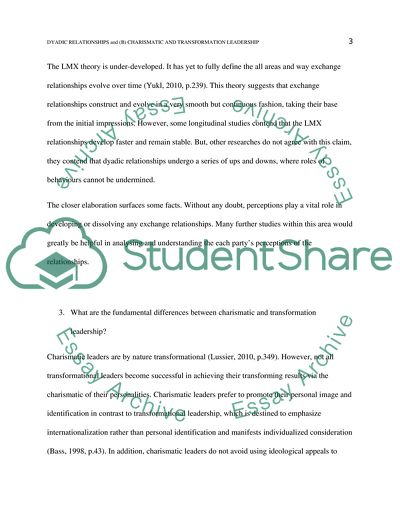DYADIC RELATIONSHIPS and (B) CHARISMATIC AND TRANSFORMATION LEADERSHIP Case Study - 1. Retrieved from https://studentshare.org/miscellaneous/1578076-dyadic-relationships-and-b-charismatic-and-transformation-leadership
DYADIC RELATIONSHIPS and (B) CHARISMATIC AND TRANSFORMATION LEADERSHIP Case Study - 1. https://studentshare.org/miscellaneous/1578076-dyadic-relationships-and-b-charismatic-and-transformation-leadership.


